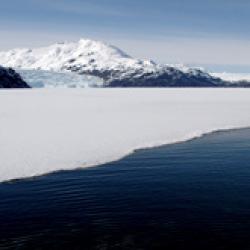Ecosystem Monitoring & Assessment Program
Ecosystem Monitoring and Assessment Program scientists collect information from Alaska's Large Marine Ecosystems including the Arctic, Eastern Bering Sea, and Gulf of Alaska. Through research surveys and other studies we collect data and information on temperature, salinity, oxygen, nutrients, phytoplankton (tiny plants), zooplankton (marine bugs), jellyfish, and fish. We use this information to understand what causes changes in the growth, fitness, and survival of fish including: walleye pollock, Pacific cod, Arctic cod, saffron cod, sablefish, rockfish, salmon (i.e., Chinook, chum, sockeye, pink, and coho), arrowtooth flounder, and forage fish such as Pacific herring, capelin, sandlance. Our research results are used to help develop Alaska marine ecosystem status reports and provide scientific advice to manage and protect marine resources and human communities.
Chinook and chum salmon are incidentally caught in federally managed fisheries in the Gulf of Alaska and Bering Sea. We combine data from fishery and non-fishery sources to study targeted catch rates, bycatch rates and how bycatch varies by area and different times of year. Bering Sea and Gulf of Alaska surveys focus on early marine ecology of salmon. Field stations (Little Port Walter and Auke Creek) conduct research on factors that affect marine migration, survival and shifts in age and physical characteristics of Chinook and other salmon. Samples of Chinook and chum salmon from the commercial fishing fleet and from tagged fish caught in salmon and non-salmon fisheries are used to determine the age and stock origin (i.e., the natal streams). Information from these data sets provide a better understanding of the impact of bycatch on specific stocks of salmon.
